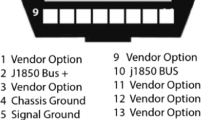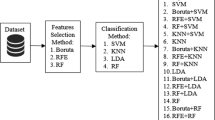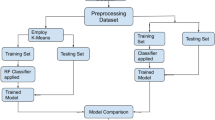Abstract
Air traffic controllers are responsible for the safe, expeditious and orderly flow of the air traffic. Their training relies heavily on the use of simulators that can represent various normal and emergency situations. Accurate classification of air traffic scenarios can provide assistance towards a better understanding of how controllers respond to the complexity of a traffic scenario. To this end, we conducted a field study using qualified air traffic controllers, who participated in simulator sessions of terminal radar approach control in a variety of scenarios. The aim of the study was twofold, firstly to explore how decision trees and classification rules can be used for realistic classification of air traffic scenarios and secondly to explore which factors reflect better operational complexity. We applied machine learning methods to the data and developed decision trees and classification rules for these scenarios. Results indicated that decision trees and classification rules are useful tools in accurately categorizing scenarios and that complexity requires a larger set of predictors beyond simple aircraft counts. The derived decision trees and classification rules performed well in prediction, stability and interpretability. Practical benefits can be derived in the areas of operations and system design in the context of air traffic flow and capacity management systems.





Similar content being viewed by others
References
Alpaydın E (2014) Introduction to machine learning, 3rd edn. MIT Press, Massachusetts Institute of Technology, Cambridge
Arranz A, Ciruelos C, Etxebarria I, Peces S, Campanelli B, Fleurquin P, Eguiluz VM, Ramasco JJ (2015) Modelling delay propagation trees for scheduled flights, ISDEFE & IFISC, ATM Seminar
Athenes S, Averty P, Puechmorel S, Delahaye D, Collet C (2002) ATC complexity and controller workload: trying to bridge the gap. In: Proceedings of the international conference on HCI in aeronautics, Cambridge, Massachusetts, pp 56–60, 23–25 October 2002
Boag C, Neal A, Loft S, Halford GS (2006) An analysis of relational complexity in an air traffic control conflict detection task. Ergonomics 49(14):1508–1526
Breiman L, Friedman JH, Olshen RA, Stone PJ (1984) Classification and regression trees. Wadsworth International Group, Belmont, CA
COMMISSION REGULATION (EU) 2015/340 of 20 February 2015 laying down technical requirements and administrative procedures relating to air traffic controllers’ licences and certificates pursuant to Regulation (EC) No 216/2008 of the European Parliament and of the Council, amending Commission Implementing Regulation (EU) No 923/2012 and repealing Commission Regulation (EU) No 805/2011
Cook A, Rivas D (eds) (2016) Complexity science in air traffic management. Ashgate Publishing Limited, England
Cook AJ, Zanin M (2016) Complex network theory. In: Cook AJ, Rivas D (ed) Complexity science in air traffic management Abingdon and New York Routledge. pp 9–22
Cook AJ, Blom H, Lillo F, Mantegna R, Miccichè SS, Rivas D, Vázquez R, Zanin M, Mantegnad R (2015) Applying complexity science to air traffic management. J Air Transp Manag 42:149–158
Corver S, Grote G (2016) Uncertainty management in enroute air traffic control: a field study exploring controller strategies and requirements for automation. Cogn Technol Work 18(3):541–565
Domingos P (2012) A few useful things to know about machine learning. Commun ACM 55(10):78–87
EUROCONTROL (2008) Principles for the design of radar simulation. Luxembourg: The European Organisation for the Safety of Air Navigation (EUROCONTROL)
EUROCONTROL (2018a) ATFCM Operations Manual: Network Manager. Edition Number: 22.0. Brussels: The European Organisation for the Safety of Air Navigation (EUROCONTROL)
EUROCONTROL (2018b) NM ATFCM Monthly summary per airport: ATFM Delay Part—December 2017. Brussels: The European Organisation for the Safety of Air Navigation (EUROCONTROL)
Geng L, Hamilton HJ (2006) Interestingness measures for data mining: a survey. ACM Comput Surv 38(3):9
Granger G, Durand N (2003) A traffic complexity approach through cluster analysis. In 5th USA/Eur. Air Traffic Management R&D Seminar
Hansman RJ, Davison HJ (2000) The effect of shared information on pilot/controller and controller/controller interactions. In: Third USA/Europe Air Traffic Management R&D Seminar. Napoli, Italy
Hilburn B (2004) Cognitive complexity in air traffic control: a literature review. In: Eurocontrol, EEC note no. 04/04
ICAO (1986) Manual of Surface Movement guidance and control systems (SMGCS), document 9476, 1st edn. International Civil Aviation Organization, Montreal
ICAO (2016) Air traffic management. Procedures for air navigation services, Document 4444, 16th edn. International Civil Aviation Organization, Montreal
Kallus KW, Van Damme D, Dittman A (1999) Integrated job and task analysis of air traffic controllers: Phase 2. Task analysis of en-route controllers (European Air Traffic Management Programme Rep. No. HUM.ET1.ST01.1000-REP-04). EUROCONTROL, Brussels, Belgium
Kass GV (1980) An exploratory technique for investigating large quantities of categorical data. Appl Stat 29(2):119–127
Kontogiannis T, Malakis S (2017) Cognitive engineering and safety organization in air traffic management. Taylor & Francis Group, Boca Raton
Kontogiannis T, Malakis S, McDonald N (2017) Integrating operational and risk information with system risk models in air traffic control. Cogn Technol Work 19(2–3):345–361
Kopardekar P, Schwartz A, Magyarits S, Rhodes J (2007) Airspace complexity measurement: an air traffic control simulation analysis. In: 7th USA/Europe air traffic management R/D seminar, Barcelona, Spain
Laudeman IV, Shelden SG, Branstrom R, Brasil CL (1998). Dynamic density: an air traffic management metric. No. NASATM- 1988-11226. Moffet Field, CA: NASA Ames Research Center
Lee K, Feron E, Pritchett A (2009) Describing airspace complexity: airspace response to disturbances. J Guidance, Control, Dyn 32(1):210–222
Liu B, Hsu W, Mun L, Lee H (1999) Finding interesting patterns using user expectations. IEEE Trans Knowl Data Eng 11(6):817–832
Loft S, Bolland S, Humphreys MS, Neal A (2009) A theory and model of conflict detection in air traffic control: incorporating environmental constraints. J Exp Psychol: Appl 15(2):106–124
Loh WY, Shih X (1997) Split selection methods for classification trees. Statistica Sinica 7:815–840
Malakis S, Kontogiannis T (2013) A Sensemaking perspective on framing the mental picture of air traffic controllers. Appl Ergonom 44(2):327–339
Malakis S, Kontogiannis T, Psaros P (2014) Monitoring and evaluating failure-sensitive strategies in air traffic control simulator training. In: 7th International conference on Pervasive technologies related to assistive environments (PETRA), 27–30 May 2014, Rhodes, Greece
Masalonis AJ, Callaham MB, Wanke CR (2003) Dynamic density and complexity metrics for real time traffic flow management. In: Proceedings of the 5th USA/Europe air traffic management R & D seminar, Budapest, Hungary
Mogford RH, Guttman JA, Morrow SL, Kopardekar P (1995) The complexity construct in air Traffic control: a review and synthesis of the literature. No. DOT/FAA/CT-TN95/22. Atlantic City, NJ: Federal Aviation Administration, William Hughes Technical Center
Monechi B, Ducci M, Cipolla M, Vitali S, Micciche S, Mantegna R, Gurtner G, Lillo F, Valori L, Pozzi S (2013) Exploratory analysis of safety data and their interrelation with flight trajectories and network metrics. In: Air transportation system conferences—interdisciplinary science for innovative air traffic management
Prandini M, Piroddi L, Puechmorel S, Brazdilova SL (2011) Toward air traffic complexity assessment in new generation air traffic management systems. IEEE Trans Intell Transp Syst 12(3):809–818
Quinlan JR (1986) Induction of decision trees. Mach Learn 1:81–106
Quinlan JR (1993) C4.5: programs for machine learning. Morgan Kaufmann, Burlington
Rokach L, Maimon O (2015) Data mining with decision trees: theory and applications, 2nd edn. World Scientific Publishing Co. Pte. Ltd., Singapore
Wang H, Xu X, Zhao Y (2016) Empirical analysis of aircraft clusters in air traffic situation networks. Proc Inst Mech Eng, Part G: J Aerosp Eng 231(9):1718–1731
Zhang J, Yang J, Wu C (2015) From trees to forest: relational complexity network and workload of air traffic controllers. Ergonomics. 58(8):1320–1336
Author information
Authors and Affiliations
Corresponding author
Additional information
Publisher's Note
Springer Nature remains neutral with regard to jurisdictional claims in published maps and institutional affiliations.
Rights and permissions
About this article
Cite this article
Malakis, S., Psaros, P., Kontogiannis, T. et al. Classification of air traffic control scenarios using decision trees: insights from a field study in terminal approach radar environment. Cogn Tech Work 22, 159–179 (2020). https://doi.org/10.1007/s10111-019-00562-7
Received:
Accepted:
Published:
Issue Date:
DOI: https://doi.org/10.1007/s10111-019-00562-7




